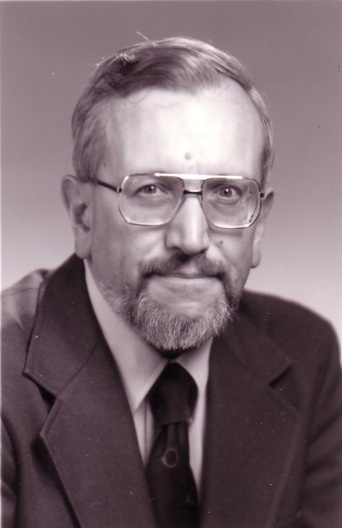
John Richard Hardy, an emeritus professor of physics known for his pioneering research, his collaboration with other scientists and his talents training graduate and postdoctoral students, died May 5 in Lincoln at age 76.
Hardy, a native of Hertfordshire, England, came to the United States as a visiting faculty member in UNL’s Department of Physics and Astronomy in 1966. He was promoted to the rank of professor of physics with tenure in 1968, and he remained with the department until his retirement in 2003.
He was an international authority in the field of lattice dynamics — the study of motions of atoms in crystals — because of his famous Deformation Dipole Model for calculating the vibrational properties of insulators.
Hardy's dedication to mentoring his students was well known. Many of them have gone on to distinguished careers in theoretical condensed matter physics at other academic institutions, in industry and at national laboratories.
He is also noted for his highly effective collaboration with experimentalists, including maintaining a long-term joint research program with Frank Ullman in the study of ferroelectric materials.
Hardy co-authored the book “The Lattice Dynamics and Statics of Alkali Halide Crystals” with Arnold M. Karo, then a senior scientist at Lawrence Livermore Laboratory in California. The statics of alkali halide crystals involve studies of how defects form and how materials stand up to long periods of radiation. The most common example of an alkali halide crystal is table salt.
The book, published in 1979, was the result of more than 20 years of study by Hardy, begun when he was working on his doctoral thesis at Bristol University in England, as well as years of study by Karo.
“He and I had so much data … it was a pile of paper about 10 feet high,” Hardy said in a UNL news release when the book was released.
In 1982, Hardy received the Distinguished Scientist Award from the UNL Chapter of Sigma Xi, the science and engineering honorary society. In 1989, he received the Outstanding Research and Creative Activity (ORCA), the highest accolade from the university in recognition of a faculty member’s research. He was cited for his pioneering work on the lattice dynamics and statics of crystalline materials, his development of the deformation dipole model, which is used widely to calculate basic properties of both pure materials and materials containing defects, his extensive work on the theory of shock propagation in solids, and identification of the possible origins of high temperature superconductivity.
Hardy was named a George Holmes Professor of Physics in 1993.
Hardy is survived by his sister Jane, who lives in the family home in England.